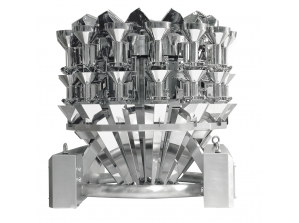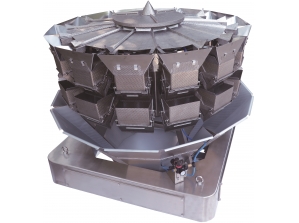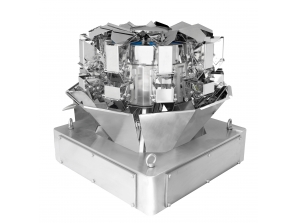-
Aviator – Mastering the Skies – A Comprehensive Guide to Aviation
-
Understanding Flight Mechanics: The Science Behind Soaring
-
The Forces at Play: Lift, Drag, Thrust, and Weight
-
Lift
-
Drag
-
Thrust
-
Weight
-
How Airfoil Design Influences Aircraft Performance
-
Aircraft Systems Demystified: Key Components Explained
-
Avionics: Navigating the Airways with Technology
Aviator – Mastering the Skies – A Comprehensive Guide to Aviation
Exploration of aeronautics unveils a complex interplay of physics, technology, and human ingenuity. Understanding the fundamental principles that govern flight dynamics requires a grasp of various factors such aviator game as lift, thrust, drag, and weight. Each element plays a critical role in the performance of an aircraft, offering a gateway to the enthralling world above the clouds.
Flight mechanics is the cornerstone of mastering aerial navigation. Essential concepts include Bernoulli’s principle and Newton’s laws of motion, which clarify how air pressure and forces interact to facilitate ascents and descents. A grounded knowledge of these principles not only enhances a pilot’s dexterity but also contributes to safer flying practices. Engaging with simulation software can further refine skills in a controlled environment, allowing students and aspiring aviators to practice their maneuvers without the risks associated with real-life flying.
Moreover, delving into aircraft systems broadens one’s comprehension of how different components work in harmony. Familiarity with avionics, propulsion systems, and aerodynamics improves troubleshooting capabilities, ensuring a thorough understanding of the aircraft’s operation. Engaging with hands-on activities, such as disassembling model aircraft or participating in flight schools, cultivates a deeper appreciation for these engineering marvels.
Navigational techniques also play a pivotal role in successful flight. Familiarity with instruments, charts, and airspace regulations is imperative for adeptness in this domain. Utilizing online resources and courses can enhance knowledge of aviation legislation and operational protocols, bridging the gap between theory and practice.
Understanding Flight Mechanics: The Science Behind Soaring
Flight fundamentally relies on four primary forces: lift, weight, thrust, and drag. Grasping these forces is crucial for interpreting how aircraft achieve and maintain altitude. Lift, generated by the wings, is influenced by their shape and angle of attack. The Bernoulli principle underscores that fast-moving air over the curved top surface creates lower pressure compared to the bottom, resulting in upward force.
Weight acts downwards due to gravity and must be counterbalanced by lift for an aircraft to ascend. Each aircraft has a specific weight limit, governed by design and performance metrics. Knowing the optimal loading conditions is essential for ensuring safe operations.
Thrust is produced by engines, propelling the aircraft forward. Propeller-driven models and jet engines utilize different mechanisms but share the goal of overcoming drag. Engine performance can vary based on altitude, temperature, and aircraft design. Pilots should be aware of these factors to ensure efficient takeoff and cruising speeds.
Drag opposes thrust and arises from two primary sources: induced and parasitic drag. Induced drag is linked to lift production and increases with angle of attack, whereas parasitic drag encompasses form, skin friction, and interference drag. Pilots can mitigate drag through speed management and aircraft configuration adjustments.
Understanding the stability and control of an aircraft is equally vital. Stability refers to an aircraft’s ability to maintain its flight path. It can be categorized as static and dynamic. Static stability relates to an aircraft’s initial response to disturbances, while dynamic stability describes its return to equilibrium over time. Control surfaces, including ailerons, elevators, and rudders, are crucial for maneuvering. Each surface plays a distinct role in altering pitch, roll, and yaw, providing pilots with the tools necessary to navigate effectively.
Familiarity with performance metrics, such as climb rate, turning radius, and stall speed, enhances a pilot’s situational awareness. These parameters depend on weight, configuration, and environmental variables. Regular training in simulations and real-world conditions helps pilots internalize these values.
Lastly, environmental factors, including wind patterns, air density, and temperature, significantly impact flight performance. Understanding how altimeter settings affect readings and adjusting for density altitude is imperative for reliable operations. Pilots should also stay informed about meteorological conditions and forecasts to enhance decision-making.
The Forces at Play: Lift, Drag, Thrust, and Weight
Understanding the fundamental forces acting on an aircraft is crucial for any enthusiast or professional in the field of flight. Each force plays a vital role in determining performance and handling characteristics. Below are detailed explanations of each force and their implications for flight dynamics.
Lift
Lift is the upward force that counteracts weight and enables an aircraft to ascend. It is generated primarily by the wings through their shape and angle relative to the oncoming airflow.
- Bernoulli’s Principle: The differential pressure created by air moving over the wing surfaces results in lift. The faster airflow over the wing’s upper surface creates lower pressure compared to the lower surface.
- Angle of Attack: Adjusting the angle of the wing relative to the airflow influences lift. However, exceeding a critical angle leads to stall, dramatically decreasing lift.
- Wing Design: Various airfoil shapes are optimized for specific tasks. For example, gliders usually feature long, slender wings to maximize lift-to-drag ratios.
Drag
Drag opposes thrust and slows the aircraft. It arises from air resistance and can be categorized primarily into two types.
- Parasite Drag: Includes form drag, skin friction, and interference drag. Reducing unnecessary protrusions and ensuring a smooth surface can help minimize this force.
- Induced Drag: Linked to the generation of lift, it increases at higher angles of attack. Understanding how to manage lift efficiently can reduce induced drag.
Strategies for drag reduction should focus on aerodynamics and efficient flight paths.
Thrust
Thrust is the forward force providing necessary acceleration. It is generated by engines and is essential for overcoming drag.
- Types of Engines: Jet engines and propellers produce thrust differently. A jet engine relies on the expulsion of gas, while a propeller uses blades to push against air.
- Throttle Management: Effective management of engine power settings is crucial for maintaining optimal speed and performance, especially during takeoff and landing phases.
Weight
Weight, the force due to gravity acting on the aircraft’s mass, must be balanced with lift for stable flight. Key considerations include:
- Load Factor: Increases during maneuvers and turns, affecting aircraft performance and structural integrity. Pilots should be aware of the limits to avoid structural overloads.
- Weight Distribution: Proper loading ensures efficient center of gravity positioning, impacting stability and control. Incorrect loading can lead to poor handling characteristics.
Mastering these four fundamental forces provides a solid foundation for understanding flight mechanics and enhances operational proficiency. Each force interacts dynamically, influencing all phases of flight from takeoff to landing.
How Airfoil Design Influences Aircraft Performance
Airfoil geometry critically affects flight characteristics, including lift generation, drag reduction, and overall efficiency. Key parameters such as camber, aspect ratio, and thickness contribute significantly to an aircraft’s operational capabilities.
Camber, or the curvature of the airfoil, plays a vital role in lift. A highly cambered wing creates a pressure difference more effectively, enhancing lift coefficients at lower speeds. Designers often opt for varying camber profiles to optimize performance during different flight phases, such as takeoff and landing, where maximum lift is essential.
Aspect ratio, defined as the ratio of wingspan to average wing chord, directly influences both lift-to-drag ratio and stall characteristics. High aspect ratio wings reduce induced drag, making them preferable for gliders and long-range aircraft. In contrast, combat aircraft typically utilize lower aspect ratios for improved maneuverability, sacrificing some efficiency for agility.
Thickness distribution is another crucial element influencing airflow over the wing. Thicker airfoils can provide greater structural strength but may increase drag. Designers often select moderate thickness values to balance performance and robustness, ensuring safety without compromising efficiency.
Leading and trailing edge modifications, such as slats and flaps, enhance an airfoil’s capabilities in varied conditions. These features increase lift during takeoff and landing, allowing for shorter runway requirements and improved performance at lower speeds. Implementing these adjustments requires meticulous analysis to avoid adverse aerodynamic effects.
Manufacturers continually leverage computational fluid dynamics (CFD) tools to simulate airflow and optimize designs. By examining airflow characteristics and pressure distributions, engineers can refine airfoil shapes for enhanced fuel efficiency and performance metrics. Successful design iterations often result from extensive wind tunnel testing, validating theoretical models before implementation.
Ultimately, proficient airfoil design balances multiple factors, aligning with the intended mission profile of the aircraft. From commercial airliners focused on fuel economy to military jets requiring agility and speed, an informed approach to airfoil configuration remains integral to successful flight operation.
Aircraft Systems Demystified: Key Components Explained
Understanding an aircraft’s intricate systems is essential for efficient operation and maintenance. Each component plays a vital role in ensuring safety and performance. Below are critical systems that every pilot and technician should know.
Propulsion System: Central to flight, this system includes engines that generate thrust. Jet engines operate on the principle of jet propulsion, while piston engines rely on internal combustion. Regular inspections for fuel efficiency and wear are crucial for optimal function.
Flight Control System: This consists of primary and secondary controls, including ailerons, elevators, and rudders. Modern aircraft often incorporate fly-by-wire technology, which enhances precision and responsiveness. Pilots must practice scenarios to understand both manual and automated control dynamics.
Electrical System: Serving as the heart of avionics, this system powers instruments, lights, and onboard computers. A dual-battery setup is typical to ensure redundancy. Technicians should routinely check circuit breakers and wiring for any signs of wear or failure.
Fuel System: Responsible for storing and delivering fuel to engines, this system includes pumps, filters, and valves. Monitoring fuel levels and maintaining filters is essential to prevent engine starvation and improve performance. Understanding fuel types and their specifications can avoid potential damage.
Hydraulic System: Utilized for controlling brakes, landing gear, and flight control surfaces, it relies on pressurized fluid. Regular checks for leaks and fluid quality are important. Knowing the system’s limits can prevent failures during critical phases of flight.
Environmental Control System: This system manages cabin pressure, temperature, and air quality. It includes air conditioning units and pressurization controls. Pilots should familiarize themselves with operational limits to ensure passenger comfort and safety.
Navigation and Communication Systems: Comprising GPS, radar, and radio communication, these systems facilitate safe flight operations and situational awareness. Regular updates and calibrations are necessary to maintain accuracy. Pilots must be proficient in using these technologies to navigate complex airspace.
Understanding these systems ensures not only the safety of the aircraft but also enhances the efficiency of flight operations. Continuous education and hands-on experience with each component will cultivate a deeper knowledge, vital for anyone involved in aircraft operation and maintenance.
Avionics: Navigating the Airways with Technology
Modern avionics play a crucial role in enhancing aircraft performance and safety. Today’s airborne electronic systems encompass navigation, communication, and monitoring tools that are vital for operational efficiency. Understanding these elements can significantly improve flight management.
Navigation Systems are at the heart of avionics. Global Positioning System (GPS) technology has revolutionized positional accuracy. Incorporating WAAS (Wide Area Augmentation System) can enhance precision to within a few feet, essential for instrument approaches. Pilots should also be proficient in utilizing electronic flight bags (EFB) for real-time data access, which aids in decision-making during flight.
Communication is another vital aspect. Digital data links, such as ACARS (Aircraft Communications Addressing and Reporting System), allow for efficient transmission of operational data, reducing voice workload and enhancing clarity. Familiarity with VHF/UHF radio communication protocols remains essential, especially in uncontrolled airspaces.
Monitoring systems include Engine Instrumentation and Crew Alerting Systems (EICAS). They provide critical insights into engine performance and alert crews to any anomalies. Understanding these indicators can prevent potential issues before they escalate, ensuring better aircraft reliability.
Autopilot Systems have advanced significantly, now offering capabilities such as automatic landing and enhanced approach assistance. Familiarity with these systems can greatly reduce pilot workload in high-stress situations. Pilots must regularly practice manual flying to maintain proficiency, especially during approach and landing phases.
Data management is essential for efficient operations. Advanced Flight Management Systems (FMS) allow pilots to input various flight parameters, optimizing fuel efficiency and flight paths. Regular updates and familiarity with FMS software ensure pilots make informed adjustments during flight.
Integrating Safety Management Systems (SMS) into daily operations enhances risk management. Utilizing data from avionics can help identify trends and potential issues, fostering a proactive safety culture. Pilots and crew should engage in regular training on the use of these systems to stay ahead of potential challenges.
Ultimately, continuous education on emerging technologies and avionics innovations is paramount. Attending workshops, engaging in simulations, and staying updated on regulatory changes will ensure operational excellence in this ever-evolving field.




